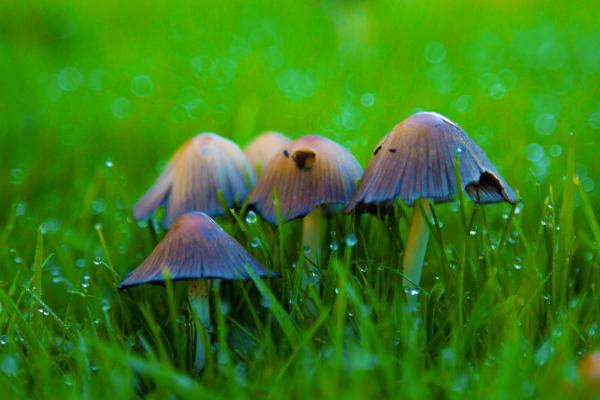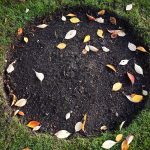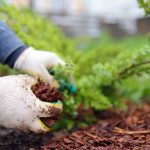Fungi are eukaryotic organisms similar to plants, although they are part of their own kingdom, the Fungi kingdom, with more than 100,000 types of fungi which can be found in very diverse environments. In this way, we can find them in natural places, in public spaces and in our own homes or even growing in our gardens, harming, in most cases, the rest of the plants.
Do you want to know why fungi grow in your garden and how to eliminate them? At EcologíaVerde we help you get rid of these little invaders.
You may also be interested in: Uses of hydrogen peroxide in the garden
Why Fungi Grow in a Garden – The Causes
Fungi can appear in our gardens for multiple causes, the most frequent being:
- Meteorological phenomena: fungi are prone to appear in humid climates with little light, so frequent rainfall and puddle formations or stagnant water can cause their appearance.
- Accumulation of waste or organic remains: decomposing organic matter is a source of infection and the appearance of fungi, so if we do not take care of our gardens and allow organic waste to accumulate, such as fallen fruits from trees, fungi will most likely invade our garden.
- Application of fertilizers: we have to know that, after all, our garden is a small ecosystem, so any alteration in one of its components can cause changes in the rest. In this way, when we apply excessive fertilizers, fertilizers and nutrients in order to ensure the growth of our plants, what we achieve in most cases is just the opposite effect, the appearance of fungi. This is due to the high amount of organic waste that fertilizers and fertilizers have in their composition.
- Overwatering: just as too much rainfall and water accumulation can encourage fungi to grow in our gardens, inadequate or excessive watering techniques can have the same effect.
- New plantings: in the early stages of growth and development, both plants and grass are vulnerable to any type of change, because their roots have not yet fully developed, being more vulnerable to the attack of possible fungi.
What happens if fungi grow in the garden
The presence of poisonous or non-poisonous fungi or mushrooms, as well as fungi that become real pests for plants, in our garden does not usually cause irreversible damage to the soil or the surrounding plants, although it is true that they can be very annoying when it comes to eliminating them or, in the case of poisonous mushrooms, that there is a problem due to its ingestion, both by people and animals that live in the home. However, the biggest problem that fungi usually present is that our plantations or crops are affected by getting sick, losing their appearance, characteristics and properties. In addition, the most common are usually edible, non-poisonous mushrooms or fungi, such as thistle mushrooms (Pleurotus eryngii) or matacandil (Coprinus comatus) although, on the other hand, microscopic fungal pests on plants are also very frequent, but if we do not eat these plants it does not pose any risk to our health.
Leaf fungi, for example, often cause alterations in plant leaves, although they can also affect shoots, younger branches and flowers. Thus, the appearance of circular spots or lumps with different shades, whitish, reddish, orange or yellowish, the deformation of the leaves, the cracking of the fruits and the loss of the flowering of the plant are some of the consequences of the diseases caused by the infection of a fungus. In the later stages of disease, the plant will most likely lose its leaves or even its life. Some of these fungi are powdery mildew, mildew, rust, black, etc.
On the other hand, wood fungi have different effects. These usually cause plant rot, which is very easily detected due to its characteristic whitish or brown color. In addition, wood usually loses its hardness characteristics, leaving a weak and soft material with hardly any resistance. These fungi are more difficult to eradicate, so in most cases it is much better to prevent.
How to get rid of fungus in your garden or lawn
As we have said before, one of the best techniques is simply to prevent the appearance of fungi through the observation of our plants. Fungi are microscopic in size, so we cannot be aware of their first appearances. However, its effects are visible, so we must be attentive to the first symptoms in our plants and know how to act.
The application of appropriate irrigation and fertilization techniques is one of the most effective tools when it comes to preventing the appearance of fungi. To do this, it is enough to adapt to the characteristics of the climate in which we find ourselves, avoiding waterlogging and applying nutrients and fertilizer correctly and in the right amount for our garden. The amounts of water and nutrients that our garden needs will depend on the place where we are, its climate and the type of species we plant in our garden, so we must make a thorough and adequate study before putting it into practice. However, we must bear in mind that a humidity of more than 80% practically guarantees the appearance of fungi, so it is necessary to maintain a humidity level below this percentage.
On some occasions, the aeration of the soil can also help us prevent the appearance of fungi. It consists of drilling holes in the soil or turning the soil, at least once a year, to ensure the absorption of water and the entry of oxygen into the substrate.
On the other hand, if it is too late to apply these prevention techniques and fungi have already manifested themselves in our plantations, the best remedy for fungi in the garden is to go to a nursery or a specific garden products store and buy the most suitable fungicide for our garden. if possible that it is natural or biodegradable. However, if you want to eliminate fungi from the garden with natural products, don’t miss this other article from EcologíaVerde on Homemade fungicides. If you are dealing with fungi or mushrooms in the soil or wood, we recommend removing them all by hand and discarding them before applying fungicide treatments.
If you want to read similar articles to Why do fungi grow in my garden and how to get rid of them, we recommend that you visit our Garden Care category.










